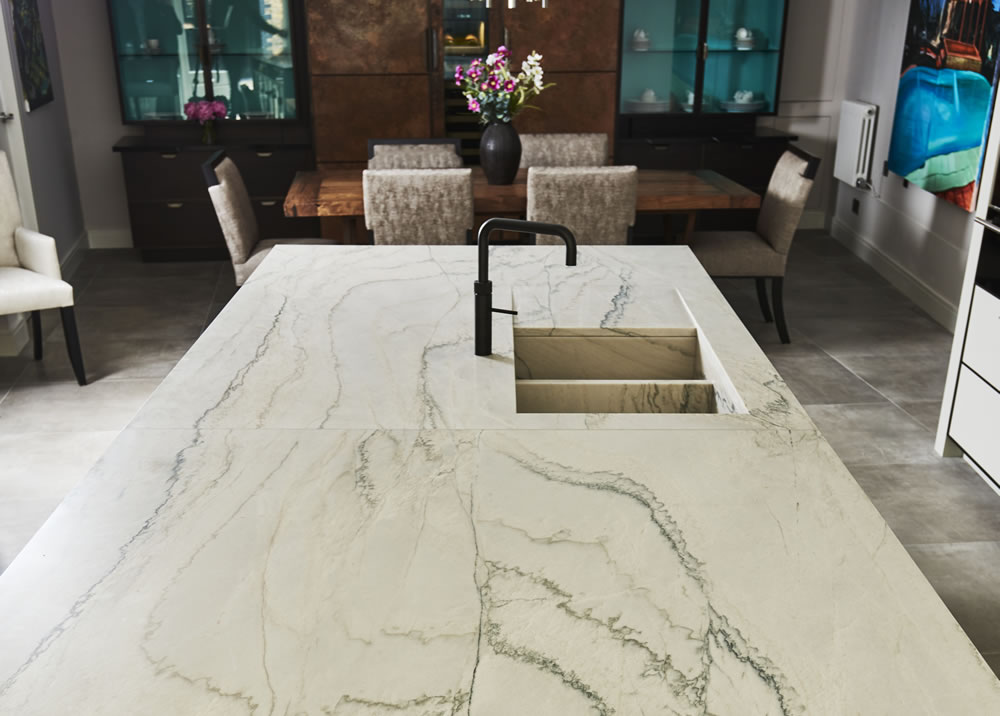
Charlie Smallbone, legendary kitchen designer and founder of Ledbury Studio, counts an island unit as an essential part of any kitchen. Here, he talks about why the island is so important and shares some tops tips on how you can make it a beautiful and hard-working part of your kitchen space.
An island tops the list of sought-after features in today’s kitchen. As hard-working as it is aesthetically pleasing, the beauty of an island is that it provides additional space for food prep and storage. And by incorporating a breakfast bar, it can be used for relaxing and entertaining too. The secret to a successful island is thinking ahead: how it will be used, its position in the kitchen, and the all-important material used for its worktop.
Why is the island unit such an important part of today’s kitchen?
The kitchen island is actually a hugely practical piece of furniture on a very large scale. Where there is the space, the island can pretty much be the whole kitchen. And by locating functional elements such as the hob or sinks onto the island, it is possible to maximise the social impact of a space, as we can carry on conversations facing towards family or guests rather than away from them. To me this has been a key point in the overall evolution of kitchen design.

How do you decide which material to use for a kitchen island worktop?
With so many materials to choose from, this can be a daunting decision, so the first task is to do some research. Before working with a particular material, I always ask myself some very simple questions: what are the thermal properties of this material; how does it respond to the acids present in certain foods and drink; will edges chip if hit by metal saucepans? And if any of these things do cause damage, can the damage be repaired? To my mind, this limits the choice of products that are genuinely suitable for use as kitchen island work surfaces.
What material would you recommend and why?
I have no hesitation in recommending quartz – a material I have used very successfully many times. It’s hardwearing and hygienic, as well as heat, stain and scratch-resistant, so is perfect for a well-used island worktop. My top tip is to source a quartz that is described as ‘full bodied’ – meaning that veins run right through it. These new generation engineered quartz products have a high percentage of quartz bonded with polymers and are machined to mimic natural stone even more closely than before.

You often use Quartzite. How does it differ to quartz and what are its advantages?
Not to be confused with quartz (the man-made product detailed above), Quartzite is a really interesting but fairly high-cost material. It is harder than granite and has good resistance to acid. At our Ledbury Mews showroom, I have used Bianco Macaubas Quartzite, which is close to marble in character but with all the positive functional properties of granite. It has produced a stunning finished result which is completely practical for a kitchen island worktop.
How else can you ensure the island unit creates a fabulous focus in the kitchen?
Think about using unexpected materials but always remember your design must be functional. Using metals in kitchens is a strong trend at the moment and applying these finishes to prominent areas of the kitchen – such as on the outside of an island – will create a stunning effect. It is best to avoid using metallic finishes in intensive work areas that involve heat or water, as they will discolour with use. However, when used on vertical surfaces like cupboard doors, ‘living’ metal finishes can take on a very attractive persona – the gradual change of the finish is completely natural. This, along with an expanse of stone like Bianco Macaubas Quartzite for the worktop, will create an island that really makes a statement.
Ledbury Studio kitchens start from £50,000.
